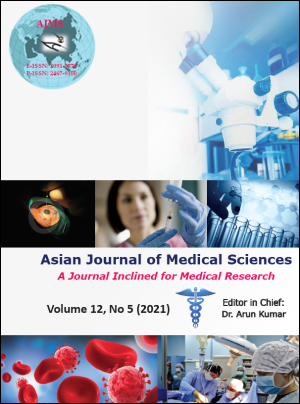Study on the relationship between respiratory scores and hyponatremia in children with bronchiolitis
Keywords:
Bronchiolitis, clinical score, hyponatremia, infantAbstract
Background: Tal et al. severity score (TSS) and Modified Wood’s Clinical Asthma Score (M-WCAS) are used to evaluate the severity of the disease in children with bronchiolitis. It has recently been suggested that there is a relationship between bronchiolitis severity and hyponatremia.
Aims and Objective: This study aimed to evaluate the relationship between both of scores and hyponatremia in children with bronchiolitis.
Materials and Methods: This prospective observational study included 172 patients (age range: 1-24 months) admitted to the hospital with bronchiolitis diagnosis. Demographic and clinical features of patients were recorded, and the TSS and the M-WCAS were calculated. These values and their components were compared with serum sodium (Na) results obtained at hospital admission.
Results: Of the 172 patients, 114 (66.3%) were male, and the mean age was 5.5 ± 4.6 months. The mean TSS and M-WCAS of the patients were 6.73±1.9, and 3.34±1.4, respectively. Hyponatremia (Na<135mEq/L) was detected in 30 (17.4%) patients. When the TSS and M-WCAS of patients with and without hyponatremia were compared, there was no statistically significant difference (p = 0.517; p = 0.662, respectively); however, there was a significant relationship between hyponatremia and low oxygen saturation levels (p= 0.026).
Conclusion: No relationship was found between hyponatremia and TSS & M-WCAS. However, the relationship between hyponatremia and hipoxia suggests that hyponatremia is likely to increase with the severity of the disease.
Downloads
Downloads
Published
How to Cite
Issue
Section
License
Authors who publish with this journal agree to the following terms:
- The journal holds copyright and publishes the work under a Creative Commons CC-BY-NC license that permits use, distribution and reprduction in any medium, provided the original work is properly cited and is not used for commercial purposes. The journal should be recognised as the original publisher of this work.
- Authors are able to enter into separate, additional contractual arrangements for the non-exclusive distribution of the journal's published version of the work (e.g., post it to an institutional repository or publish it in a book), with an acknowledgement of its initial publication in this journal.
- Authors are permitted and encouraged to post their work online (e.g., in institutional repositories or on their website) prior to and during the submission process, as it can lead to productive exchanges, as well as earlier and greater citation of published work (See The Effect of Open Access).




